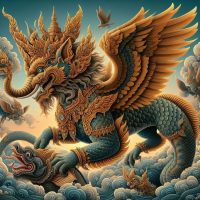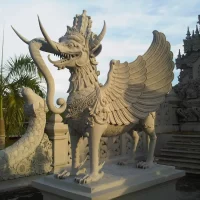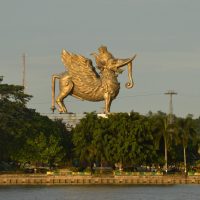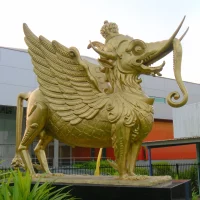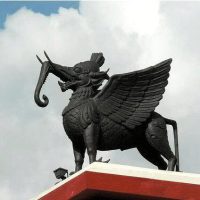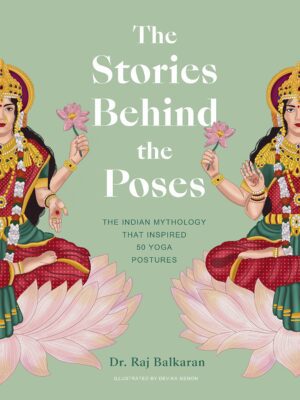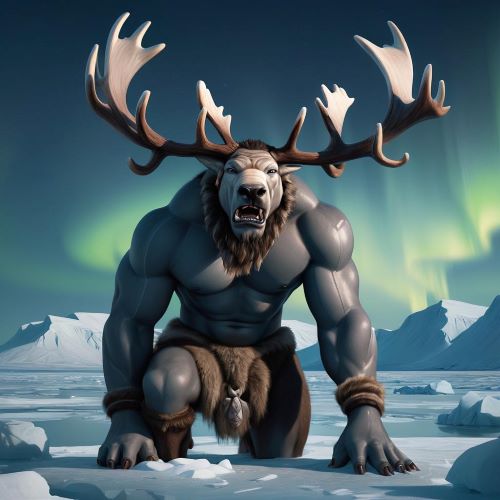Lembuswana : The Protector
Listen
At a glance
| Description | |
|---|---|
| Origin | Indonesian Mythology |
| Classification | Hybrids |
| Family Members | N/A |
| Region | Indonesia |
| Associated With | Protection |
Lembuswana
Introduction
Indonesia, a sprawling archipelago steeped in diverse cultural traditions, holds within its folklore a captivating array of mythical entities. Among these, Lembuswana emerges as a singular figure, a fusion of strength and elegance revered in the mythology of the Kutai people of East Kalimantan. This mythical creature, deeply entrenched in the narratives of Dayak and Malay cultures across Kalimantan, finds its representation in intricate traditional carvings, embodying symbols of authority and safeguarding.
Physical Traits
Lembuswana, a captivating entity in Indonesian mythology, boasts a mesmerizing amalgam of physical traits drawn from diverse creatures. Its form is a striking blend, featuring the majestic head of a lion, the trunk reminiscent of an elephant, the wings akin to a bird’s, and the scaly body of a fish. This composite anatomy symbolizes Lembuswana’s dominion over the realms of land, air, and water, each trait contributing to its multifaceted essence.
At the forefront of Lembuswana’s visage is the regal lion’s head, epitomizing strength and leadership. Its commanding roar echoes the authority of a sovereign, accentuated by a crown that underscores its royal lineage. Yet, beyond sheer might, Lembuswana embodies intellectual prowess, mirrored in the elephantine trunk reminiscent of Ganesha, the Hindu deity revered for wisdom and knowledge.
Adding to its majestic form are wings evocative of Garuda, Indonesia’s revered national bird symbolizing swiftness and divine connection. Meanwhile, its lower body, adorned with fish scales, signifies agility and adaptability in the aquatic realm. Occasionally adorned with horns or spurs, Lembuswana’s imposing presence transcends the mundane, crafting a visually stunning and symbolically rich portrayal. It emerges as a creature embodying strength, wisdom, power, and a profound connection to both earthly and aquatic domains.
Family
In Kutai mythology, Lembuswana’s lineage remains shrouded in mystery, diverging from conventional tales of familial ties. Rather than being linked to a specific lineage, Lembuswana assumes the role of a divine guardian or protector, transcending biological lineage for spiritual stewardship. While no singular narrative dictates its origins within Kutai folklore, interpretations vary widely.
Some regard Lembuswana as an autonomous entity, a formidable guardian spirit entrusted with safeguarding the Mahakam River, the vital lifeline of the Kutai Kartanegara region. Alternatively, connections to the Hindu pantheon surface, depicting Lembuswana as a celestial mount or companion to a particular deity.
Legend intertwines Lembuswana with the esteemed King Mulawarman, suggesting its role as the mythical steed of this revered monarch of the Kutai Kartanegara Kingdom. Such associations with royalty amplify the creature’s symbolism of power and authority. However, the absence of a definitive lineage narrative only deepens the enigma surrounding Lembuswana, adding layers to its mystique and allure.
Other names
In various local cultures and dialects, Lembuswana assumes multiple identities, each name reflecting unique interpretations and regional nuances. Among these aliases are “Singa Barong”, “Gajah Singa”, and “Hantu Raya”, underscoring the creature’s multifaceted nature. Beyond Lembuswana, alternative monikers such as Leman Ganggayaksa or the straightforward designation of “Naga” (dragon) emerge across different regions of East Kalimantan. These diverse appellations illuminate the fluidity of oral tradition and underscore the myriad perspectives encapsulated within Kutai mythology.
Powers and Abilities
Lembuswana’s awe-inspiring physique hints at a plethora of extraordinary abilities. With the strength and valor evoked by its leonine aspect, it exudes unparalleled might. The elephantine trunk suggests a reservoir of wisdom and sagacity, while the Garuda wings afford it the ability to traverse the heavens. Meanwhile, the fish scales imply mastery over the depths of the aquatic domain. This amalgamation of powers renders Lembuswana a formidable entity, asserting its dominion over land, sky, and sea alike.
Some interpretations go further, suggesting Lembuswana’s potential influence over the natural order. As the guardian spirit of the Mahakam River, it might wield control over water currents, shielding against floods or droughts. Moreover, its royal associations hint at a protective mantle extended over the Kutai people and their realm. As a mythical being, Lembuswana is ascribed with an array of abilities: the lion’s head embodies courage and command, the elephant’s trunk epitomizes wisdom, the bird’s wings represent liberation and transcendence, and the fish’s body symbolizes abundance and prosperity. Its purported capacity to traverse realms makes it a sought-after guardian, invoked for both protection and guidance by those who revere its formidable presence.
Modern Day Influence
Even in contemporary times, Lembuswana remains a prominent emblem within Indonesian culture, particularly in Kalimantan, where its presence graces traditional art and architecture. Its visage holds significance in various cultural ceremonies and rituals, permeating modern artistic expressions, literature, and media throughout Indonesia.
In essence, Lembuswana transcends its mythical origins to become a potent symbol embodying power, protection, and prosperity within Indonesian society. Whether depicted in age-old carvings or modern portrayals, it serves as a steadfast reminder of Indonesia’s vibrant cultural tapestry and the enduring values it encapsulates.
Within Kutai culture, Lembuswana holds a place of prominence as the official symbol of Tenggarong, the capital of Kutai Kartanegara. Statues depicting its majestic form adorn public spaces, anchoring residents to their rich heritage. Local artisans frequently integrate Lembuswana into their creations, ensuring its legend thrives in contemporary contexts.
Moreover, Lembuswana takes center stage during local festivals and cultural gatherings, its image fostering communal spirit and pride in Kutai traditions. In a broader context, Lembuswana epitomizes the timeless potency of mythology, urging us to cherish and uphold cultural narratives that tether us to our collective past.
Related Images
Newest addition
Frequently Asked Questions
What is lorem Ipsum?
I am text block. Click edit button to change this text. Lorem ipsum dolor sit amet, consectetur adipiscing elit. Ut elit tellus, luctus nec ullamcorper mattis, pulvinar dapibus leo.
What is lorem Ipsum?
I am text block. Click edit button to change this text. Lorem ipsum dolor sit amet, consectetur adipiscing elit. Ut elit tellus, luctus nec ullamcorper mattis, pulvinar dapibus leo.
What is lorem Ipsum?
I am text block. Click edit button to change this text. Lorem ipsum dolor sit amet, consectetur adipiscing elit. Ut elit tellus, luctus nec ullamcorper mattis, pulvinar dapibus leo.
What is lorem Ipsum?
I am text block. Click edit button to change this text. Lorem ipsum dolor sit amet, consectetur adipiscing elit. Ut elit tellus, luctus nec ullamcorper mattis, pulvinar dapibus leo.
What is lorem Ipsum?
I am text block. Click edit button to change this text. Lorem ipsum dolor sit amet, consectetur adipiscing elit. Ut elit tellus, luctus nec ullamcorper mattis, pulvinar dapibus leo.

